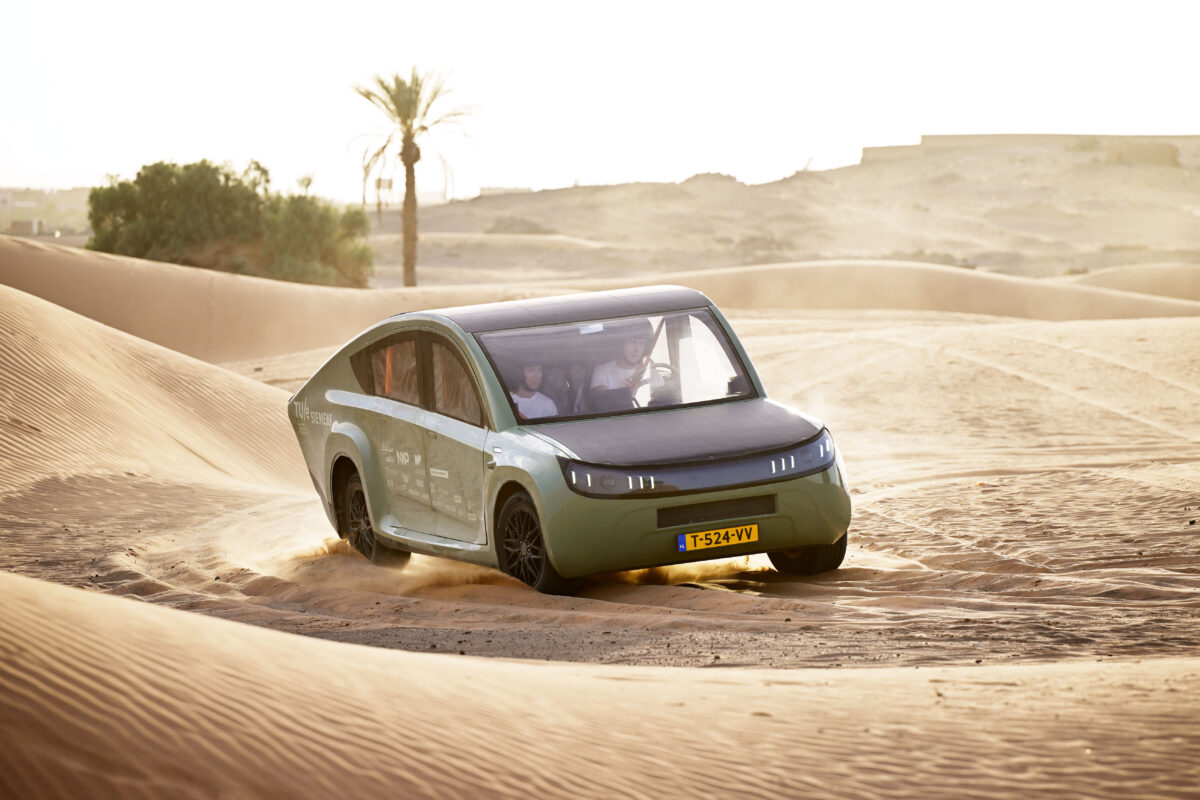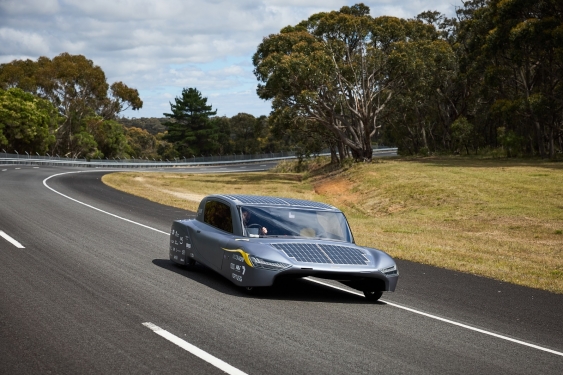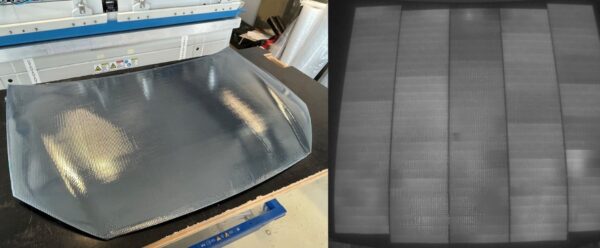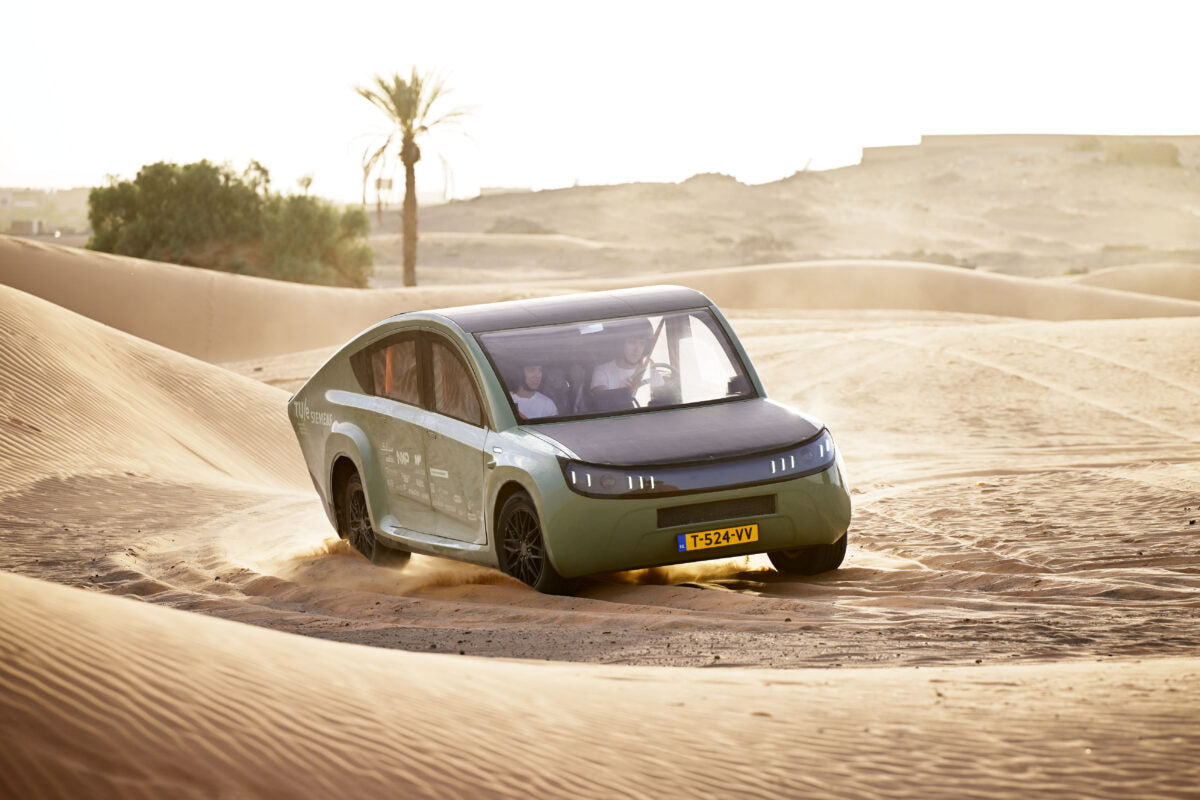https://www.pv-magazine-australia.com/2023/10/19/unsw-student-team-to-push-for-change-in-world-solar-challenge/
UNSW student team to push for change in World Solar Challenge

The Stella Terra off-road solar-powered car is put to the test in the Sahara.
Image: STE/Bart van Overbeeke
The Dutch solar-powered electric car team from Eindhoven University this week celebrated that its Stella Terra (off) road-legal solar car completed the North African test race, a stretch spanning from northern Morocco to the Sahara Desert.
The Stella Terra vehicle has a top speed of 145 km per hour, weighs 1,200 kilograms, and has a range of 710 km when there’s enough sun. The Eindhoven team said the vehicle achieved an average range of about 550 kms, depending on the surface, which included dry riverbeds, forest area, along steep mountain trails and loose desert sand.
The Eindhoven team was once a regular in Australia’s iconic Bridgestone World Solar Challenge, a biennial 3,000 km expedition from Darwin to Adelaide, and boasts four wins in the Cruiser class. But the team has this year chosen to focus on the development of its solar-powered off-road car.
Among the teams that will line up in the race this year is the University of New South Wales (UNSW). The team’s Sunswift 7 solar-powered electric car holds the world record for the fastest electric vehicle (EV) over 1,000 km on a single charge. The team will be seeking to better that when it lines up in this year’s edition of the race which commences in Darwin on Saturday.
The team’s most recent car design, the Sunswift 7, will compete in the Cruiser class, where once the Eindhoven team pushed them in competition. The Sunswift team must complete the three stages across 3,600 km using only the power of the sun.

Image: UNSW/Richard Freeman
The UNSW team has taken part in the epic race nine times, going back to 1996, but the team said it may be competing in the event for the last time with Richard Hopkins, Professor of Practice at UNSW, saying the race badly needs an update.
“The regulations for the World Solar Challenge have basically been the same for the past 20 years. Innovation and technology have moved on so much in that same period of time, but these regulations have not been re-aligned in the same way,” he said.
“We need to be able to explore new technologies. For example, we are only able to use silicon solar cells, but there are plenty of other technologies, such as gallium arsenide, that we are not allowed to utilise.”
“There are lots of different battery technologies emerging, as well as new motor technologies, in addition to what we are already planning for Sunswift 8 in terms of including hydrogen fuel cells.”
“I think it would be great to have more freedom because the world has moved on, and the World Solar Challenge regulations maybe need to move with the times as well.”
The world of electric cars is now vastly different to when the solar car race launched in 1987. In the past five years, electric car sales have increased exponentially, going from just over two million EVs sold in 2018 – which included full hybrid vehicles that still primarily run on fossil fuels – to almost 11 million EVs sold globally, now primarily fully electric cars. There has been an exponential jump not only in EV sales but also in priorities for testing the boundaries of sustainable vehicles.
Solar panels for EVs are now a commercial element. Among others, the U.S. start-up Aptera Motors this year presented the ‘launch edition’ of its three-wheeled solar electric car, which the company plans to start producing by the end of 2023. The production launch version of the two-seater solar-powered electric car achieves a cW value of 0.13 and a range of 643 km.
Integrating photovoltaics into vehicle bodies has also moved forward. In August this year, Fraunhofer Institute for Solar Energy Systems ISE showed a PV bonnet at the IAA Mobility car show in Germany, which has a rated output of 115 W and features 120 PERC shingle solar cells.
“We applied the solar cells to the hood panel of a car model that is frequently sold in Germany, interconnected them and laminated them with film,” explained Martin Heinrich, coordinator for PV mobility at Fraunhofer ISE. “To achieve this, the lamination process was optimised carefully to minimise air pockets, avoid wrinkling of the film module, which can occur due to the curved surface area, and to maintain the overall integrity of the hood structure.”

Image: Fraunhofer ISE
To make the most of the available surface area on the hood, the Fraunhofer ISE team constructed their prototypes using a selection of IBC, PERC shingle, and TOPCon shingle solar cells. The researchers say, in principle, any solar cell technology can be used.
“The technology could also be applied to the metal roofs of vehicles, which would have the advantage of being much lighter than photovoltaic roofs made of glass,” said Harry Wirth, Power Solutions Division Director at Fraunhofer ISE. “Expanding the technical possibilities for integrating photovoltaics into vehicle shells will appeal to more and more customers; there is still a lot of potential to be tapped here.”
In Australia, Hopkins would like to see students involved with the Sunswift project at the cutting edge of automotive design and construction and showcase that level of expertise on the world stage.
“What disappoints me is that mainstream car companies at times are now using more advanced technologies than we are,” he said. “We should be the ones ahead of the curve. Those companies should be looking at us and trying to understand what our amazing young, inspirational students are doing.”
Hopkins is hoping to enter discussions with both event organisers and other teams to discuss the possibility of updating the rules. The question is whether the race can maintain its ethos of helping to push the limits of technological innovation.
Until more adaptive frameworks for cars in the race are developed, the Australian solar electric car team will still be trying to push the boundaries they can in the race starting this month on 22 October. The team will broadcast the race from the car back to Sydney using 5G mobile. This way, the race control team back on campus at the university can monitor the telemetry and data from the car in real time.
This content is protected by copyright and may not be reused. If you want to cooperate with us and would like to reuse some of our content, please contact: editors@pv-magazine.com.
<



